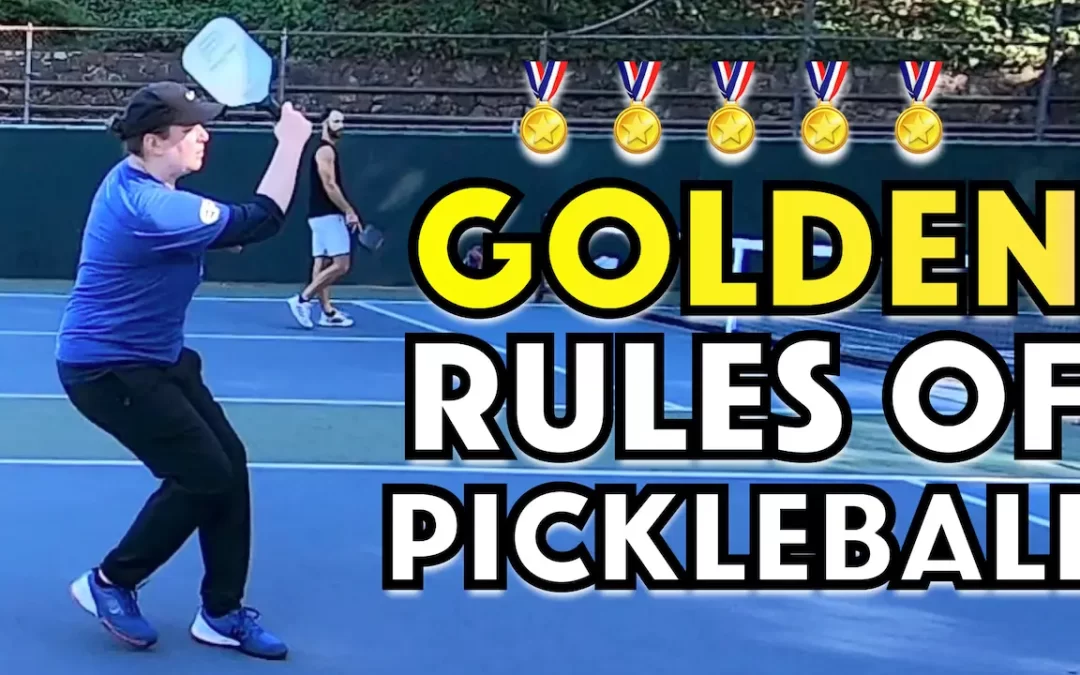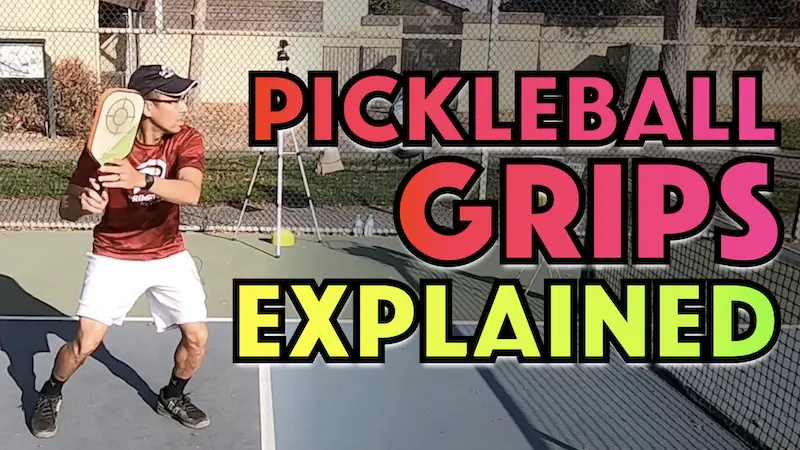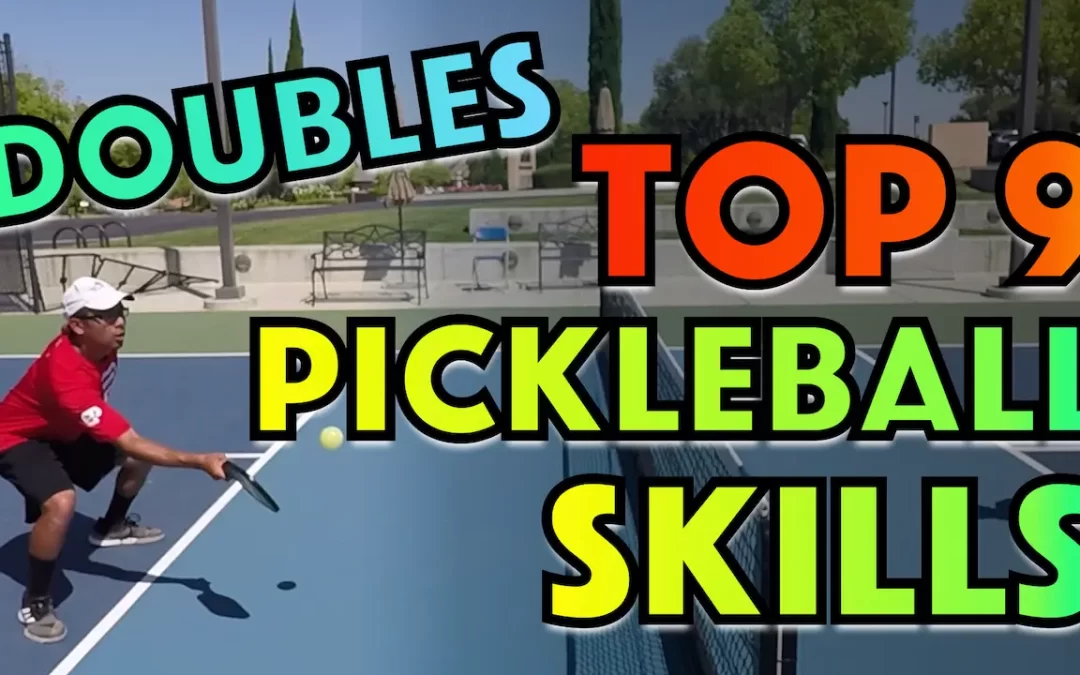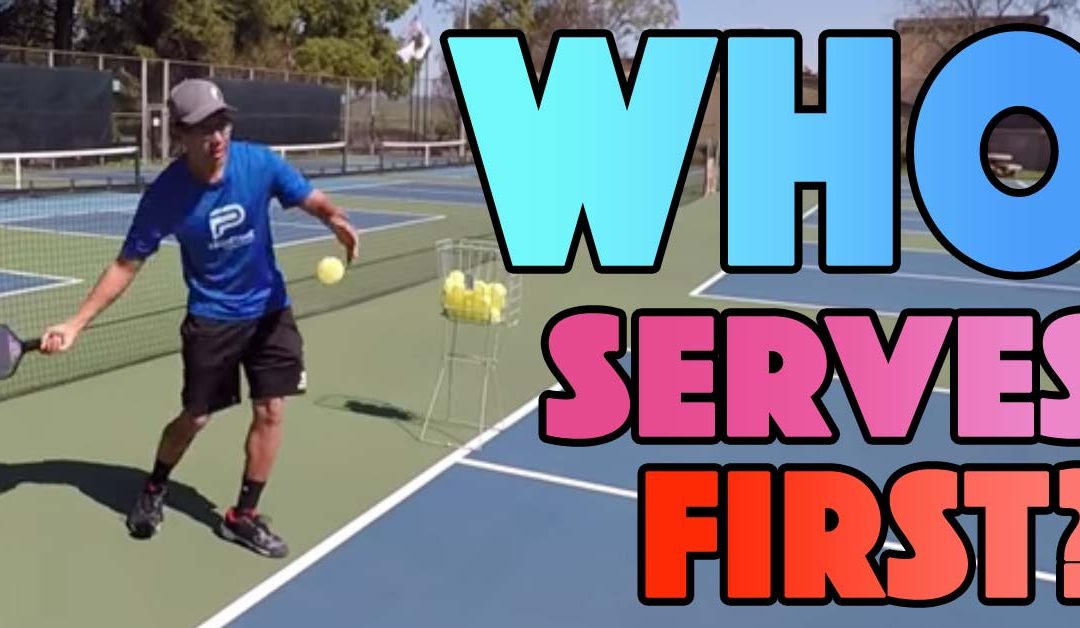As much as power is coming more and more into the game of pickleball, dinking is still and will likely always be an important part of the game for the simple reason that when all four players are up at the non-volley zone line, a dink is often strategically a wise option when an attack with a high likelihood of success is not available to you.
This is usually the case when your contact is quite low and both your opponents have fast hands and can punish a highball. Even one that’s hit quite hard.
Often your best bet is to continue to pressure them with an aggressive dinking game to set up your next attack.
Now that we’ve established that dinks are and will likely continue to be important, you should know that there are quite a few technical elements that separate players with a developing dinking game from those who have mastered the use of dinks in their game.
If your dinks aren’t quite what you want them to be then check them for one of these seven common issues. Fix these and your dinks will be a lot stronger and ready for battle.
Mistake #1 – Standing Too Tall
A key mistake we see on the dink is players standing too tall at the non-volley zone line.
You are not ready in this position. You will be locked at the knees, and you will be cutting off your lower body from your shot and losing out on one of your biggest stabilizers.
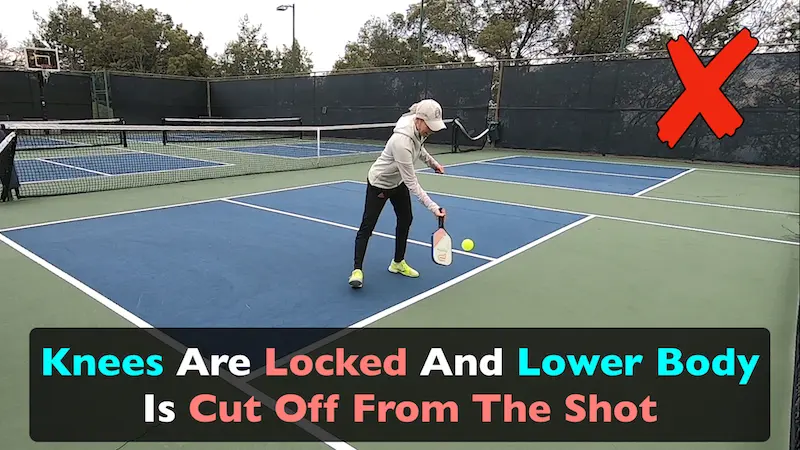
If an attack comes you will be back on your heels in an instant.
You always want to be ready for the drive first since that’s what can hurt you most.
So, this type of posture is of very little use to you at the non-volley zone line in general and will hurt you in ways beyond just dinking.
When it comes to dinking starting from this posture and you choose to simply reach down with your arm, bending from the waist, your shot will be unstable as a result and therefore unreliable.
You should get low with your knees and use them to push off the ground a little which is the energy that you will then transfer into your shoulder which is what ultimately sends your paddle forward to meet that ball and get it over the net.
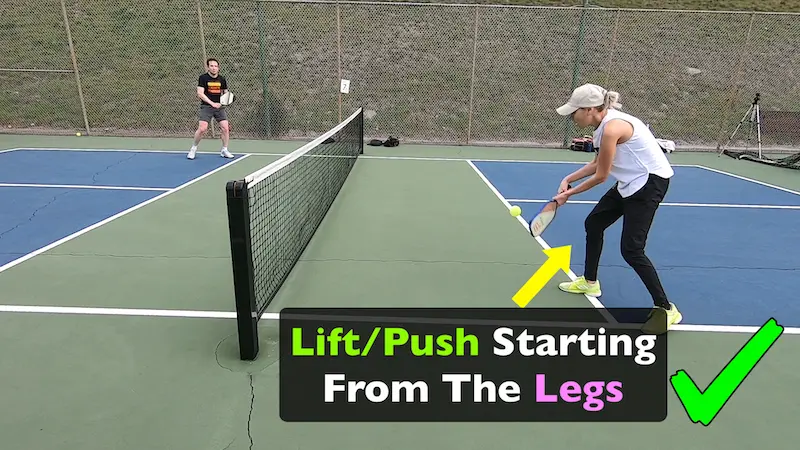
The dink is not much of a strike at all but more of a lift or a push. That push starts from your legs in order to be the most controlled.
So even though you’re not going to hit the ball hard don’t discount your legs. Use them to get low for maximum control and stability on your dinks.
Mistake #2 – Too Much Wrist Flick
Next up is the flick, the wrist flick. This one is a notorious error on dinks that we see coming up time and time again.
It comes down to excessive or totally isolated use of the wrist.
When dinking this is how the mistake looks on the forehand side (see image below) and here it is on the backhand side (see image below).
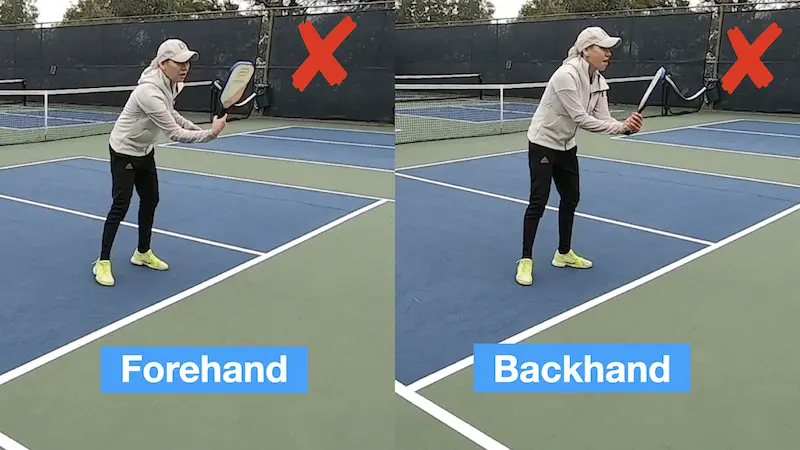
The main reason this is so problematic is because your paddle face angle changes dramatically throughout contact as you execute this wristy swing. If you misjudge your point of contact at all, then your shot ends up being dramatically different than what you intended.
Very often this ends up being a contact where maybe you intended to meet the ball when your paddle face was here and looked like this (see first image below) but instead you met it at this point here (see second image below).
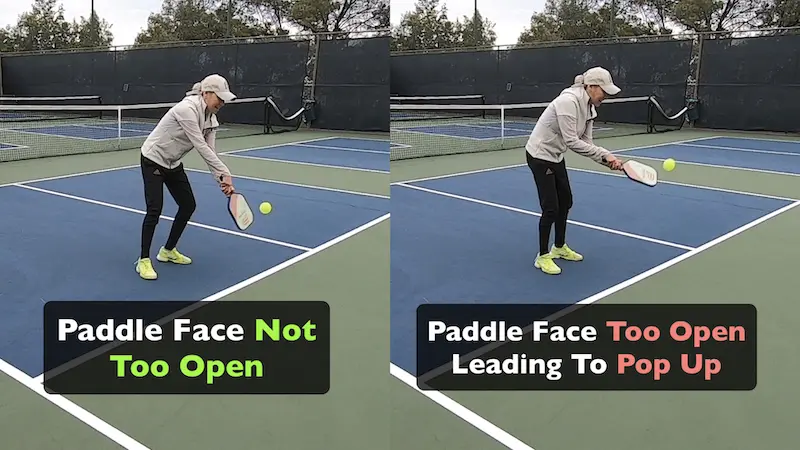
Your paddle face when you met the ball is more open at this point and the ball gets popped up and you likely get attacked.
This is very often how this ends up playing out.
The other issue is that when using your wrist you will tend to accelerate into your contact point which will also lead to the ball going higher and further than you would like.
Using your wrist excessively is a control killer and leads to lots of popped up shots and contacts that you didn’t intend.
When you swing from your shoulder, you’re able to keep your paddle face angle stable throughout the whole shot. So, if you misjudge your contact point a little bit the shot will still come off relatively similar.
Of course you want to dial in your timing of your contacts so you nail it every time but when you hit from your shoulder it is more forgiving and you can control the speed and height of your swing much better.
Mistake #3 – Excessive Use Of The Elbow
Another mistake that leads to unstable dinking is excessive use of the elbow during your shot.
This mistake is more common on the backhand side whereas the flick that we mentioned earlier is more common on the forehand side.
This high to low chopping type of motion will often send your dinks shooting in a straight line or more down than you intended instead of going over the net in a gentle arc.
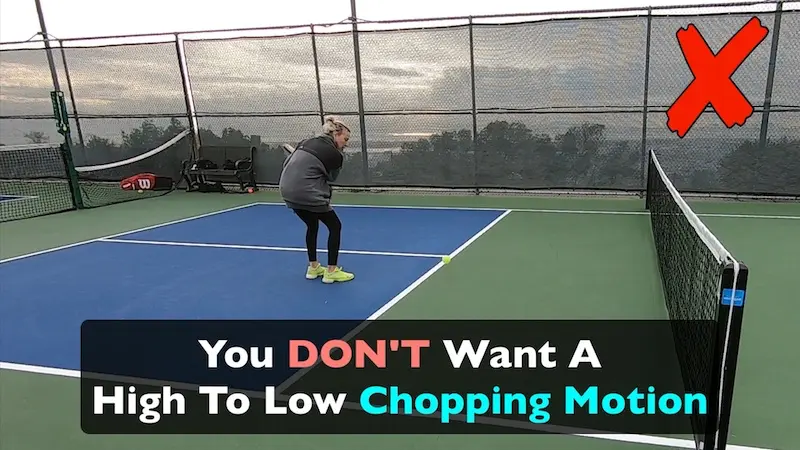
As a result, your shot will often end up in the net or it goes shooting too high and well past the kitchen because of the straight and hard shot that this swing tends to produce.
You’ll want to get under the ball and lift from the shoulder with a nearly straight arm, just a gentle bend in the elbow, and very little to no use of the elbow during the motion.
Many players mistakenly try to add slice to their dink with this elbow motion but slice is still generated by motion where the main hinge is the shoulder.
Mistake #4 – Excessive Reaching
Next up is excessive reaching when you dink.
There is an optimal zone in which you want to contact the ball on each side of your body.
For the most control on the forehand side, it will be about here (see image below) and on the backhand side the range is about here (see image below).
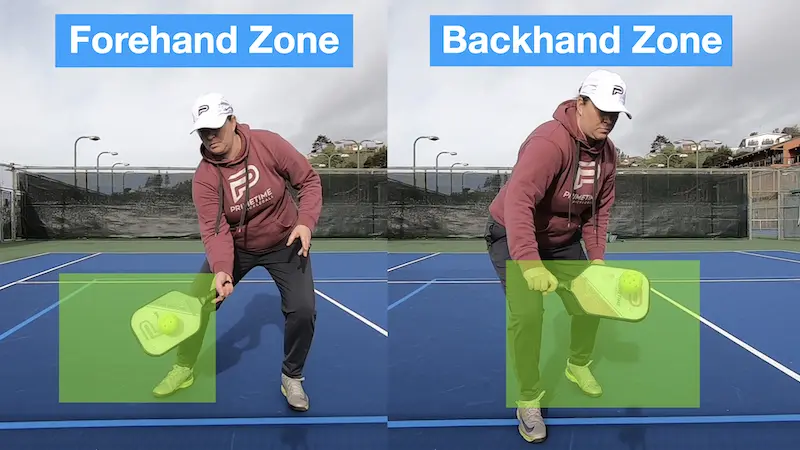
The range will be a bit bigger on your backhand side because dinks that come more towards your feet will be covered with your backhand, as well as dinks to the left of that if you’re a righty whereas dinks that are roughly towards the outside of your right foot and to the right of that will mostly be covered by your forehand.
This zone is slightly different from person to person depending on your height and your wingspan.
You should move your feet quickly so that ideally the ball doesn’t get out of this zone unless they’ve hit a shot that is pressing you substantially in which case you will have to improvise and do your best.
But far too often we are seeing improvised contact points that didn’t need to be.
Work hard to get a consistent contact point that stays mostly in the optimal zone on your dinks which will lead to much more reliable and consistent dinking.
Reaching is sometimes inevitable but minimize it as much as possible.
Mistake #5 – Excessive Footwork
Next up is too much footwork.
Moving quickly and efficiently so you get a strong contact each time should not be confused with excessive unnecessary footwork.
You do want to be ready at the line and light on your feet but that doesn’t mean your feet always have to be in motion.
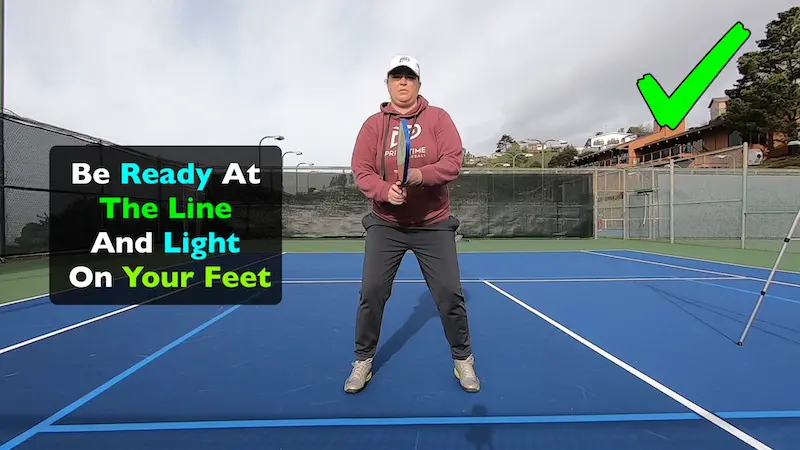
You also want to limit your footwork to only that which is necessary so that you could conserve energy and keep the moving parts to a minimum.
Many players can be too bouncy between shots and be using too many steps as they hit leaving them unprepared or out of position for the next shot.
This often looks like too much stepping into dinks and crossover footwork when moving laterally to retrieve a dink.
These are all necessary at specific times but you must be discerning about when you actually need to step into a dink or use crossover steps in order to retrieve one versus when a small shuffle step or an open stance dink with toes staying pointed forwards will do just fine and is in fact optimal to keep you ready for the next shot.
This is often a case where less is more.
Mistake #6 – Getting Pushed Off The NVZ Line
The next error that’s far too common is when a player lets themselves get pushed off the non-volley zone line with an incoming shot. They take steps back in order to let that ball bounce when they could have gotten low, reached in a bit and relatively comfortably taken that as a dink volley and held their ground up at the non-volley zone line.
What then makes it worse is if they get pushed back and drift back off the line is that they fail to reclaim the lost ground and continue playing from back there.
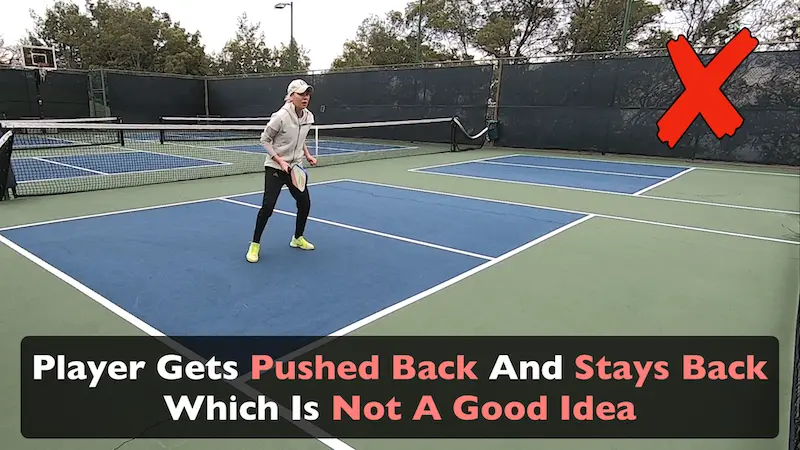
This is far too common at lower levels. Don’t be the player that gives up ground easily.
If their dink is going to shoot well past the kitchen then usually the best course of action is to take it as a dink volley and hold your ground up at the line.
Mistake #7 – Big Turn And Take Back
The last error that we’re going to cover today but certainly not least is a big turn and take back.
This is typically occurring on the forehand side dink.
Players tend to take too big of a shoulder turn and too big of a reach back.
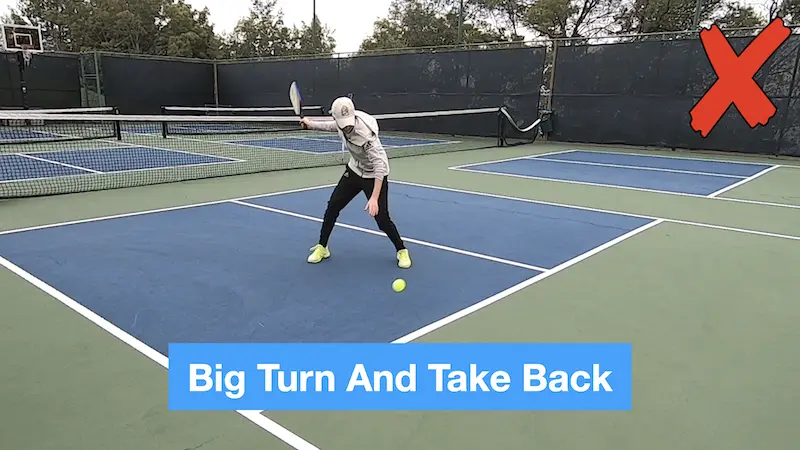
As a result, they’re coming in with too much acceleration unnecessarily into contact because of a large backswing.
This leads to hitting dinks harder than they would like often shooting past the non-volley zone line of your opponents.
You need very little take back on a dink and very little shoulder turn.
You simply lay your paddle back, get that paddle face slightly open and under your intended contact point. You push up and forward with a low to high motion.
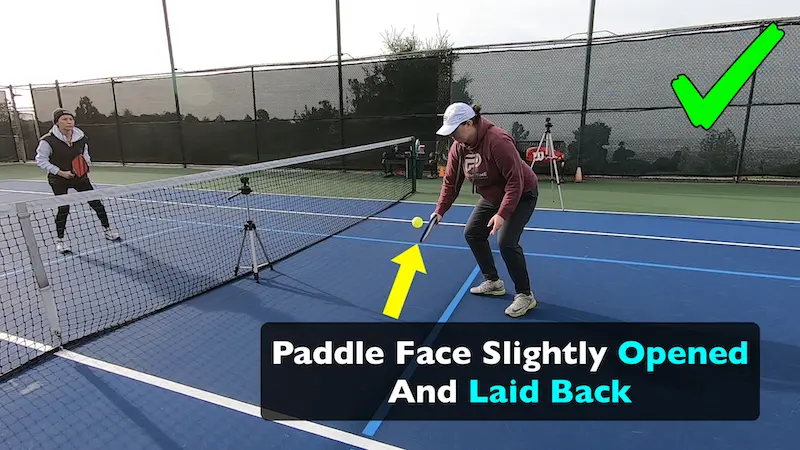
Since it’s a very limited and typically gentle swing because you want to send a soft shot there’s really no need to take the arm back too far or at all.
Even a more aggressive dink does not need a big take back.
Eliminate any excessive backswing and your control will improve dramatically.
Do you think you’re falling victim to any of these dinking mistakes? Are there other common ones you see out there that we didn’t cover here today? Let us know in the comments below. We’d love to hear about it!

